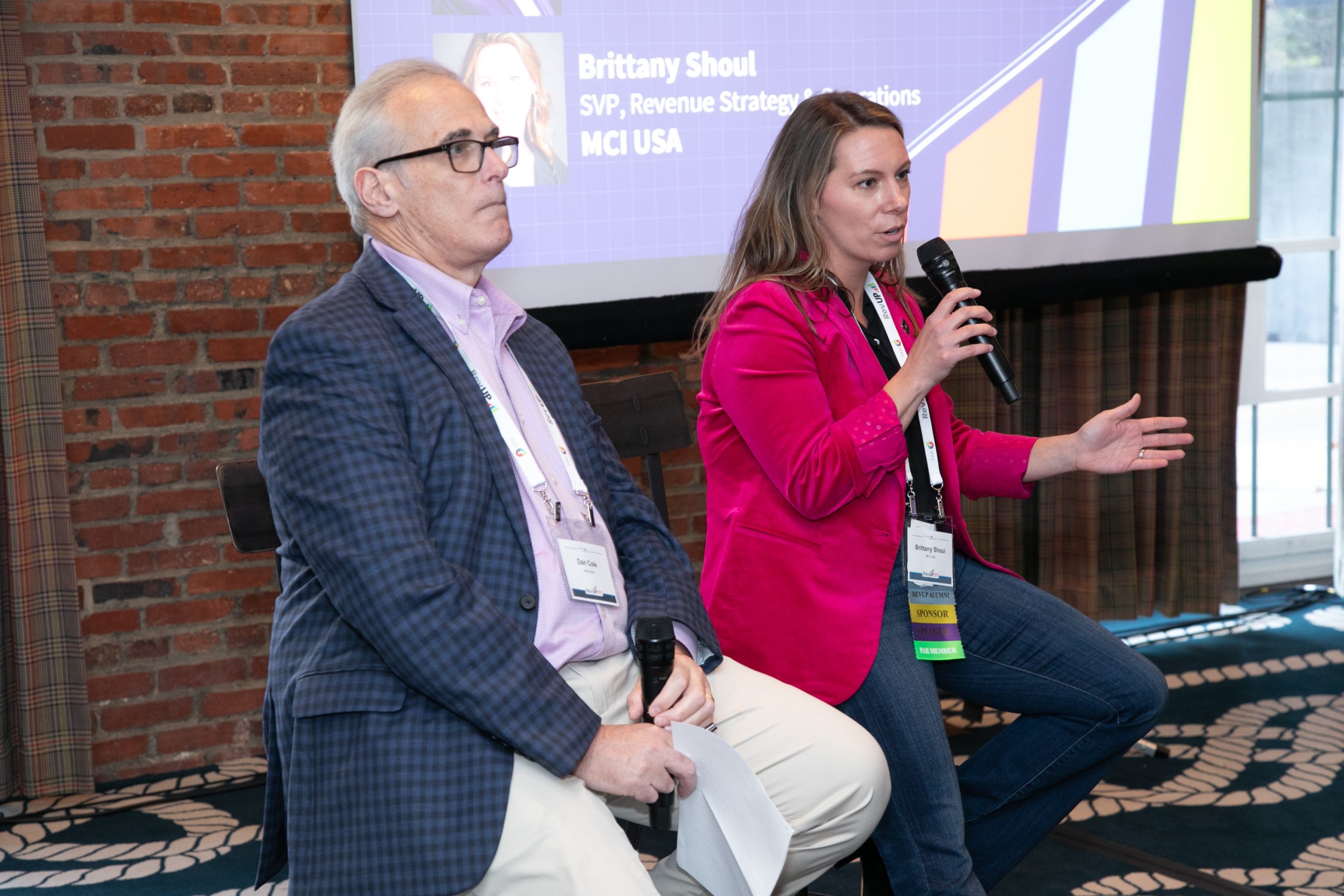The C-Suite Advantage: Elevating the Sales Process in Associations

By Carolyn Shomali, PAR Director of Content
Elevating the conversation between your association and a potential partner often requires elevating who’s involved.
While C-suite executives may not traditionally see themselves as part of your association's business development team, their involvement can be highly impactful in securing, maintaining and strengthening partner relationships.
Dan Cole, Sr. Director Exposition Sales for AVIXA, has worked with associations for more than 35 years in various business development roles. He emphasizes that educating an association CEO about their role in securing non-dues revenue is a crucial first step.
“You are our organization's top business developer. You are our organization's top salesperson… you are the brand of the organization.”
Recognizing the C-suite’s impact on a sales negotiation may seem obvious, but Brittany Shoul, Senior Vice President Revenue Strategy and Operations for MCI, notes a common disconnect she observes between executives and sales professionals.
“Sometimes, as a salesperson, you can look at a C-suite executive and think, ‘They know it all and they have all the answers,’” Shoul explains. “Or, vice versa, that executive is looking at the salesperson and thinking, ‘I'm not a salesperson.’”
Understanding when—and more importantly, how—to incorporate an association CEO and other top level executives into the sales process is a critical yet often overlooked part of an overall business development strategy. Associations can start by considering these five ‘C’s’ of developing sales skills for the C-suite.
Context: Setting the Sales Environment
When involving a C-suite executive in the sales process, clearly define their role and the specific impact they can have. Shoul suggests that this could be as simple as adding weight to the conversation or actively pitching the product.
“All of that context sets the relationship up for successes versus making too many assumptions about someone’s role, responsibility or comfort level in that type of conversation,” she says.
Providing executives with concise and relevant information ensures they are prepared and positioned to contribute effectively.
Coaching: A Two-Way Learning Process
While coaching is often thought of as flowing from the C-suite to sales practitioners, a truly effective environment fosters mutual learning – particularly because many association executives may not have direct sales experience.
“That C-suite executive might have never been a salesperson. They could have come from industry, membership or marketing,” Shoul notes.
Mutual learning begins within environments where psychological safety is prioritized, and it excels when the right association values are in place to support it. Cole recommends identifying your association’s core values and infusing them into the sales process. For example, at AVIXA, the values “courage, heart, and trust” encourage professionals at all levels to voice ideas and feedback, fostering both internal and external trust.
Collaboration: Aligning Across Departments
Asking a company to invest in your association requires demonstrating a reciprocal investment in their success. Large-scale, customized deals often necessitate cross-departmental buy-in within the association. This is another area where the C-suite plays a pivotal role.
“[Those deals] need to involve that C-level executive’s buy-in to say, ‘Yeah, I'm in and I'm going to help you as the sales team take this idea to the other teams and departments and for them to know I’m bought into this,’” Shoul says.
Creativity: Supporting Innovation in Sales
When a product’s life cycle has run its course, or a program is underperforming, a C-suite executive’s support for a creative approach to improvement is critical.
The same applies to partnerships—if they no longer serve the association’s best interests, Cole stresses the importance of finding innovative and creative ways to evolve the relationship.
“We don't go for lose-win, we go for win-win,” Cole says. “As a business developer, you and your executive [need] to be able to derive value from the relationship - as they do as well - in fact, that's your obligation and that's what develops trust.”
Confidence: Building a Strong Executive-Sales Partnership
The first four C’s—context, coaching, collaboration, and creativity—don’t develop overnight. They stem from fostering confidence between the sales team and the C-suite. Shoul emphasizes that this confidence builds over time.
“To be able to go to a C-level executive and say, ‘I know I'm the sales and business development person, but I think I need your help. I’d love to set the right context, find collaboration, and pitch this company together’—that takes confidence,” she says. “Someone has to take the first step in that conversation.”
The role of the C-suite in the sales process extends far beyond occasional appearances in high-profile negotiations. By actively engaging in business development through context-setting, coaching, collaboration, creativity, and confidence-building, association executives can elevate sales outcomes and foster long-term, mutually beneficial partnerships. Encouraging this dynamic not only enhances revenue opportunities but also strengthens the association’s overall strategic position in the marketplace.
